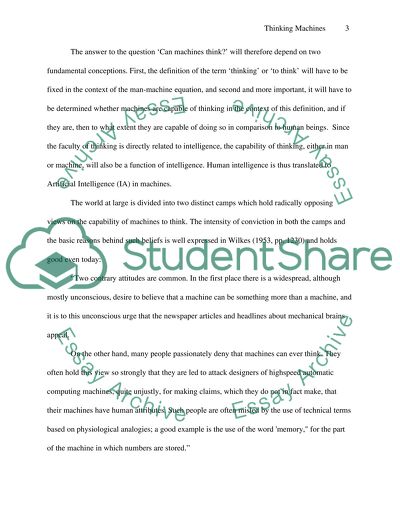Cite this document
(“Can machines think Essay Example | Topics and Well Written Essays - 2500 words”, n.d.)
Retrieved from https://studentshare.org/miscellaneous/1542374-can-machines-think
Retrieved from https://studentshare.org/miscellaneous/1542374-can-machines-think
(Can Machines Think Essay Example | Topics and Well Written Essays - 2500 Words)
https://studentshare.org/miscellaneous/1542374-can-machines-think.
https://studentshare.org/miscellaneous/1542374-can-machines-think.
“Can Machines Think Essay Example | Topics and Well Written Essays - 2500 Words”, n.d. https://studentshare.org/miscellaneous/1542374-can-machines-think.


